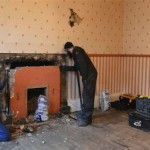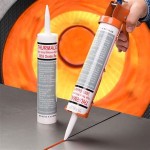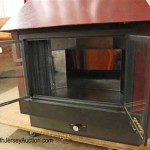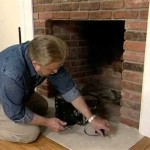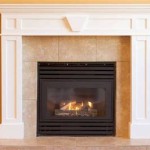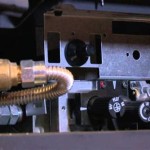What Is a Heat Circulating Fireplace?
A heat circulating fireplace is a type of fireplace designed to distribute heat more efficiently throughout a room or even an entire home. Unlike traditional fireplaces that primarily radiate heat directly into the room, heat circulating fireplaces utilize a system of fans or vents to move warm air from the fireplace to other areas. This enhanced heat distribution offers several advantages over standard fireplaces, making them a popular choice for homeowners seeking both comfort and energy efficiency.
How Heat Circulating Fireplaces Work
The core functionality of a heat circulating fireplace revolves around a system that captures the heat generated by the fire and circulates it. This system typically involves one or more of the following components:
- Fans: Many heat circulating fireplaces incorporate fans that pull warm air from the firebox and push it through vents or ducts. These fans can be powered by electricity or by the heat generated by the fire itself, depending on the model.
- Vents: Vents are strategically placed around the fireplace to direct the warm air to different areas of the room or home. These vents can be integrated into the fireplace design or installed separately as part of a larger ductwork system.
- Heat Exchangers: Some more sophisticated heat circulating fireplaces employ heat exchangers to further enhance heat transfer. These exchangers absorb heat from the firebox and transfer it to the air being circulated, maximizing the amount of heat distributed.
The specific configuration and technology used in heat circulating fireplaces can vary depending on the manufacturer and model. However, the fundamental principle remains the same: capturing the heat produced by the fire and distributing it efficiently throughout the desired space.
Benefits of Heat Circulating Fireplaces
The benefits of heat circulating fireplaces extend beyond their aesthetic appeal. Here are some key advantages they offer:**
Enhanced Heat Distribution
The most significant benefit of heat circulating fireplaces is their ability to distribute heat effectively throughout a larger area. This is in contrast to traditional fireplaces, which primarily heat the space directly in front of them. By circulating warm air, these fireplaces can create a more comfortable and evenly heated environment, even in larger rooms or homes.
Increased Energy Efficiency
By maximizing the heat generated by the fire, heat circulating fireplaces can improve energy efficiency. By capturing and circulating heat that would otherwise be lost up the chimney, these fireplaces can reduce the need for supplemental heating systems, potentially lowering energy bills. This is particularly beneficial in colder climates or during the winter months.
Enhanced Safety
Some heat circulating fireplaces feature safety features not found in traditional fireplaces. For instance, some models include built-in safety screens that prevent sparks or embers from escaping the firebox, reducing the risk of fire hazards.
Types of Heat Circulating Fireplaces
Heat circulating fireplaces come in various types, each offering its own advantages and disadvantages. Here are some common types:
Direct Vent Fireplaces
Direct vent fireplaces utilize a system of vents that draw fresh air from outside the home and exhaust combustion gases directly outdoors. This design eliminates the need for a traditional chimney and allows for installation in areas where a chimney is not feasible. However, they often require professional installation.
Vent-Free Fireplaces
Vent-free fireplaces are designed to operate without a chimney or vent system. They are typically smaller and more compact than direct vent fireplaces and are designed to distribute heat using a fan system. While they are convenient for installation, they may not be suitable for all homes due to safety and combustion gas concerns.
Gas-Powered Fireplaces
Gas-powered fireplaces, also known as gas inserts, can be easily converted into heat circulating models. They typically utilize a blower system to distribute heat throughout the room. Gas fireplaces offer convenience and ease of use, as they do not require wood for fuel.
Wood-Burning Fireplaces
Wood-burning fireplaces can also be equipped with heat circulating systems. This typically involves installing a fan or blower system that draws warm air from the firebox and distributes it through vents.
Choosing the right type of heat circulating fireplace depends on factors such as budget, heating requirements, existing fireplace infrastructure, and personal preferences.

Heat Circulating Rumford

Majestic Sovereign 42 Heat Circulating Wood Burning Fireplace Sa42c Flame Authority

Moving Hot Air How To Heat Your House Using Fireplace Napoleon

Heatilator Accelerator 42 Inch Heat Circulating Wood Fireplace

Majestic Sovereign 42 Heat Circulating Wood Burning Fireplace Sa42c Flame Authority

Sovereign 42 Heat Circulating Fireplace Majestic Sa42c

Monessen Sa42c 42 In Heat Circulating Fireplace 1 Pick N Save

Fireplace Heat Circulator Interior Inspections Internachi Forum

Majestic Sa42c Sovereign 42 Inch Heat Circulating Fireplace Kitchen And Bath Authority

Moving Hot Air How To Heat Your House Using Fireplace Napoleon
Related Posts



